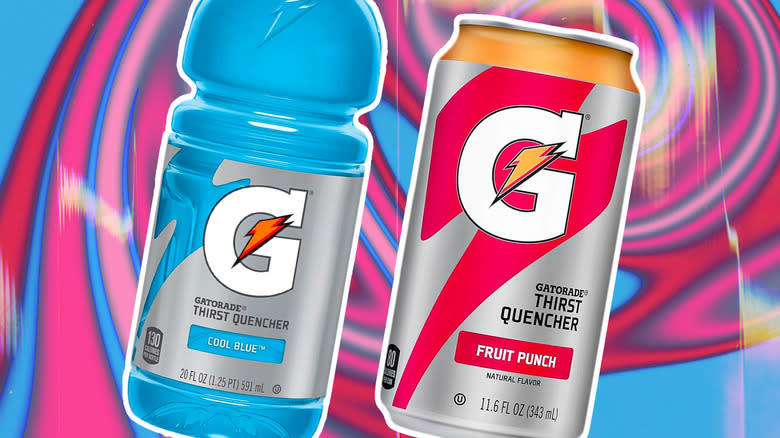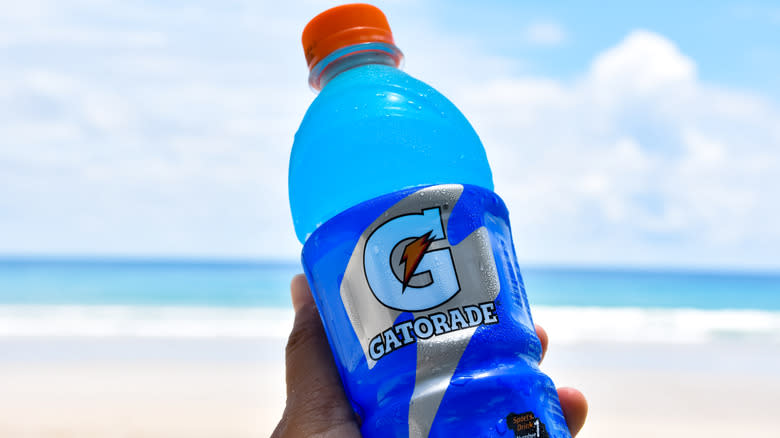Bottled Vs Canned Gatorade – Container Aside, Is There Any Real Difference?

The thirst quencher known as Gatorade has had a major presence at many of life's biggest events since 1965. The fruity flavors and electrolyte-rich hydration drink formula have made it essential on the sidelines for athletes and as a go-to hangover cure, according to bartenders. But when you go shopping for Gatorade, you might be surprised not only to have to choose from a variety of flavors such as classic Fruit Punch or Lime Cucumber (and we've ranked popular flavors of Gatorade, worst to best), but bottles or cans as well. Gatorade was originally sold in cans when the rights to it were purchased in 1967 by Stokely Van-Camp, a tinned pork and beans company. Now, though, canned Gatorade might give some folks pause, wondering if it's any different than the bottled stuff.
In terms of the actual Gatorade, there is no difference between the canned and bottled formula. Both versions include water, sugar, dextrose, citric acid, salt, sodium citrate, and monopotassium phosphate, as well as flavoring, food dyes, and starches. The sizes do vary slightly between single-serve cans and bottles at 11.6 fluid ounces and 12 fluid ounces, respectively. As a result, the calories and nutrition breakdown do differ, but not significantly. So then, if they're the same, why do some folks think the canned version tastes different from the plastic bottled version?
Read more: Bottled Water Brands, Ranked Worst To Best
Why Canned Gatorade Tastes Different Than Bottled

If you've ever talked with soda fans about their beverage preferences, you'll find that many of them swear that canned and bottled sodas don't taste the same. In fact, many claim the canned version of their favorite drinks tastes crisper, cleaner, and better overall. The same may be true of Gatorade, not because the drink itself is any different, but because the cans' interiors are coated with polymer to prevent any interactions between the Gatorade and the aluminum. However, there is a chance that this coating absorbs some of the flavors, resulting in a milder, cleaner taste. Plastic bottles, on the other hand, contain acetaldehyde that can leach into the Gatorade, which can make for an unpleasant, well, plasticky flavor.
It's also worth noting that the plastic used for Gatorade bottles is very thick and hard. This makes the drink slower to cool in the fridge than when it's in an opaque aluminum can. So, there's a good chance you're drinking Gatorade at a warmer temperature if you're drinking it from a plastic bottle. This disparity in temperatures may account for the perceived difference in flavor, with colder Gatorade possibly tasting more refreshing.
Read the original article on Mashed

